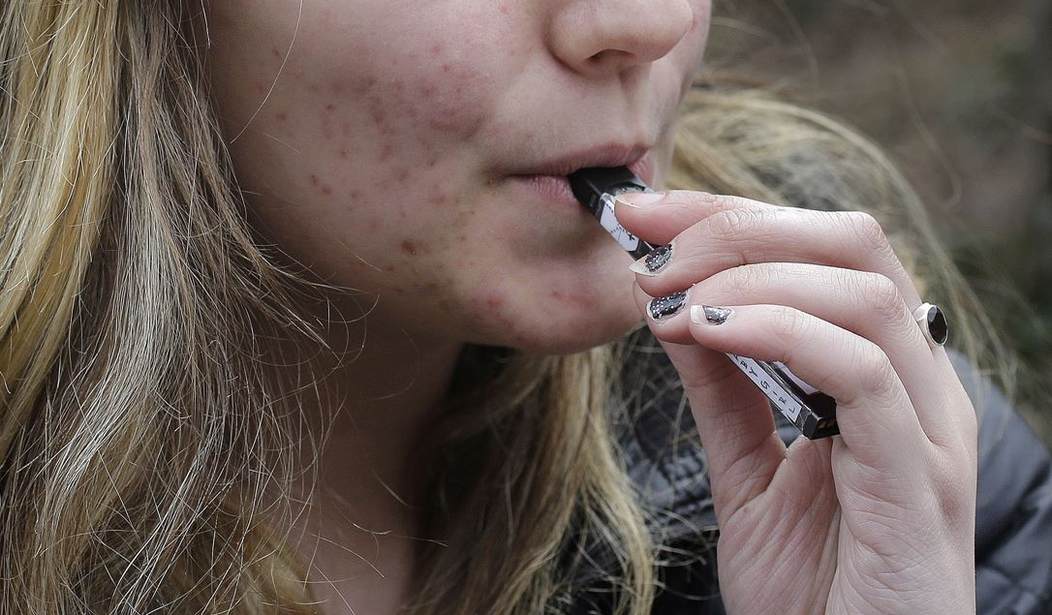The Centers for Disease Control and Prevention (CDC) recently released results from the National Youth Tobacco Survey (NYTS) examining e-cigarette use among middle and high school students. There’s good news as youth e-cigarette use has continued to decline, with an estimated 11.3 percent of high school students and 2.8 percent of middle schoolers reporting having used a vapor product on at least one occasion in the month prior to the survey in 2021. Among high school students, vaping rates have declined by 41.8 percent since 2020, when 19.4 percent had used e-cigarettes, and a 58.9 percent decrease from 2019, when 27.5 percent reported using e-cigarettes.
However, in its latest report, the CDC is not providing data on youth combustible cigarette use – arguably the most dangerous form of tobacco. According to the CDC, smoking rates among young adults aged 18 to 24 years old has significantly declined. In 2020, only 9.6 percent of current adult smokers were young adults – a 57 percent decline from 1995 when 22.4 percent of adult smokers were 18 to 24 years old. In fact, smoking rates among young adults are comparable to 65+ rates – in 2020, only 9.2 percent of current smokers were 65 years and older.
Despite record-low rates of e-cigarette use, the CDC and the Food and Drug Agency (FDA) are continuing to sound an over-inflated alarm on e-cigarette use. Also, according to the agencies, because the results were conducted online, the 2021 NYTS findings cannot be compared to previous results.
Most alarmingly, the type of e-cigarette devices being used by youth in 2021 are overwhelmingly disposables. In fact, many disposable products were introduced post-FDA deadlines and the agency has not asserted any real regulatory authority over their questionable status on the market. The FDA’s lack of actions regarding the regulatory standing of such products is inexcusable.
According to the 2021 NYTS results, among high school e-cigarette users, disposable e-cigarettes were the most commonly cited device type, with 55.8 percent of high schoolers reporting using those products. Prefilled pods were the next most commonly cited device, with 28.9 percent of students using them, followed by 7.5 percent of high schoolers that used open systems such as tanks and/or mods.
Recommended
Comparatively, in 2020, 48.5 percent of high schoolers reported using prefilled pods, 26.5 percent reported using disposables, and 14.8 percent reported using open systems. In essence, in one year, among current high school e-cigarette users, use of disposables increased by more than 110 percent, while youth use of prefilled pods like JUUL, decreased by 40.4 percent, and open tanks decreased by 49.3 percent.
This is deeply troublesome given that most of disposable e-cigarette products are technically illegal products as they came to market post-the FDA’s self-imposed deadline of August 8, 2016. After the agency deemed products like e-cigarettes as tobacco products, the agency required all products to be on the market prior to August 8, 2016, or they would have to submit a premarket tobacco product application (PMTA) and gain authorization from the agency to market their novel tobacco product. All other products on the market prior to August 8, were required to submit PMTAs to the agency by September 9, 2020.
According to the Truth Initiative, Puff Bar disposable vapes “appeared on the market in 2019” or three years after the August 8 deadline. The FDA waited until July 2020– a mere few months before the September PMTA deadline – to issue a warning letter to the company for not completing a PMTA. Puff Bar was also issued a warning for misleading marketing including “explicitly or implicitly representing that … the products present a lower risk of tobacco-related disease.” The FDA does allow for companies to market novel tobacco products as less harmful, but only if the manufacturer has presented robust evidence that such products are less harmful than cigarettes. To date, the FDA has issued modified risk orders for only 12 product applications.
Meanwhile, the FDA is currently issuing marketing denial orders to millions of e-cigarette e-liquid products PMTAs. These liquids are the products that are used in open systems, which are the least popular device by youth. In September, the FDA celebrated issuing “132 MDOs for over 946,000 flavored” vape products “concluding that [manufacturers] failed to provide sufficient evidence that those products will benefit adult smokers to an extent sufficient to justify [the] documented risks to youth.”
It is overwhelmingly clear that both the CDC and FDA are intent on blocking adult access to tobacco harm reduction products under the guise of protecting the children. In their own actions – or lack of – the FDA has allowed youth e-cigarette use to remain by not enforcing prior regulations. If lawmakers truly wanted to address youth use of any age-restricted product, they should start by requiring federal agencies to follow their own regulations.
Lindsey Stroud is Director of The Taxpayers Protection Alliance’s Consumer Center.
























Join the conversation as a VIP Member